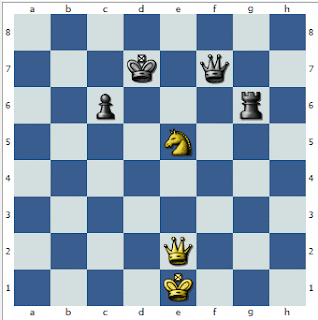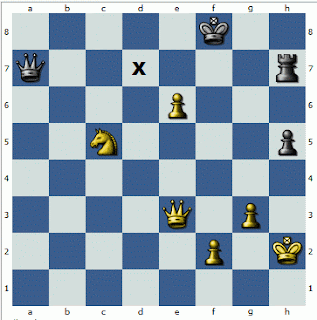 | |||
| White assembles a triple battery with the two rooks and queen. |
2. Deflection
 |
| White deflects the Black Knight by moving g5. The capture of h7 pawn will follow. |
3. Discovered Attack
 |
| White moves the Bishop to f3 with a discovered check and then captures the black rook afterwards. |
4. Fork
 |
| The White Knight forks the Black King, Queen, Rook and pawn. |
5. Interference
 |
| White moves the Knight to d7 and interferes Black's Rook support to the Queen. If Black takes the Knight Rxd7, White's next move is to capture the Black Rook and wins in material. |
6. Overloading
 | |
| White will move to Kb3 to capture the b4 pawn. |
 |
| Black will protect the b4 pawn by Rb8, this will remove the guard on the f7 pawn, White will then capture Rxf7. The Black rook in this scenario is said to be overloaded. |
7. Pin
 |
| The White Bishop pins the Black Queen. |
8. Skewer
 |
| The White Bishop skewers the Black King and Rook. This attacks both pieces. A skewer is also called Reverse Pin. |
9. Undermining
 |
| White captures the guard on the Black Knight by Nxe6. If Black captures Rxe6, White will capture the Black Knight free in Bxd5 and at the same time pins the rook. |
No comments:
Post a Comment